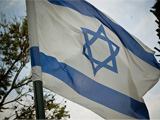Via India to Israel: The Migrations of the Bnei Menashe
9 Nov 2011
By Shalva Weil for ISN
So far, 1,500 tribal people from north-east India have immigrated to Israel, with a further 7,200 due to join their brethren in the Jewish state. The decision (in principle) to bring the Bnei Menashe was taken four months ago by the Israeli Ministerial Committee on Immigration and Absorption, headed by Foreign Minister Avigdor Lieberman. The Israeli government is expected to pronounce a final verdict on the subject in the near future.
The rationale behind the decision to bring tribespeople from north-east India to Israel is that they are “lost Israelites” exiled by the Assyrian kings, who are now in the process of returning “home”. According to the Bible, the northern Kingdom of Israel was conquered by the Assyrians in the eighth century BCE and the ten tribes (Reuben, Simeon, Issachar, Zebulun, Menasseh, Ephraim, Dan, Naphtali, Gad and Asher) in the Kingdom were exiled, their fate always being something of an enigma. Although it was generally assumed that these exiled Israelites eventually assimilated, particular Biblical passages contained prophetic proclamations (such as Isaiah, 11:11-12; Ezekiel, 37:21-23) which suggested that they continued to live on and would be ‘ingathered’ in later days. Hopes of discovering the Ten Lost Tribes and belief in the possibility of their ultimate return were kept alive throughout the ages.
Migrations and Religions
The Bnei Menashe are in fact the Shinlung, a collectivity of tribes also known as Kukis, Chins or Mizos, who reside in the remote states of Manipur and Mizoram in north-east India, and in Tiddim in Burma. Originating in the area near Afghanistan to which the Ten Lost Tribes were exiled, they were pushed eastward into northern India, to Tibet, and from there, to China. According to their narrative, they retained their own customs but endured persecution by the Chinese, who killed their priests and burned their holy books, which explains why they do not possess any Scroll of the Law or texts in Hebrew. Some of the Shinlung escaped and took refuge in caves, becoming known as ‘The Cave People’, a familiar motif in this part of the world. Emerging from the caves, the people established a separate village named Sinlung (hence their collective appellation, Shinlung). From approximately 1300 CE they moved to Shan State and crossed the great river Irrawaddy; they reached their present habitat in India on the Burmese border between 1100 and 1600 CE.
The Indian states of Manipur and Mizoram came under British rule in the 1890s as a result of the Chin-Lushai expedition and the Anglo-Manipur War. After missionaries established themselves in the region, members of the Shinlung began converting to Christianity and, by 1981, about 83% of the population of Mizoram and about 30% of the population of Manipur had converted to some form of Christianity.
Echoes of the past
With their introduction to the Bible, some Shinlung saw parallels between their pre-Christian pagan traditions and those of the ancient Israelites, particularly with regard to sacrificial practices and millenarian beliefs. Their conversion to Judaism began comparatively recently: In 1951, Challianthanga, head deacon of the United Pentecostal Church in the village of Buallawn in Mizoram, had a dream that God told him that the Mizos were descendants of the lost Israelites, who should return to their original homeland, Israel, and practice their ancient religion. Judaism neatly dovetailed with their pre-Christian indigenous religion and a millenarian connection to Judaism was made through imputed affiliation to the Ten Lost Tribes.
The Manipur Jews Organisation was established in 1972, and, a decade later, individuals from Manipur and Mizoram had made direct contact with Israelis (including this author) and Jewish organizations worldwide. Small groups began to convert formally to Judaism and emigrate to Israel, but, once there, they encountered problems: Their conversion in Bombay (Mumbai) was not recognized by the Chief Rabbinate, so today members of the group convert formally to Judaism in Israel.
From September 2004, a new advocacy group, Shavei Israel, established and financed Hebrew centers in Manipur and Mizoram to train candidates for conversion. It also hosted a delegation of rabbis from Israel who investigated the claims and the practices of the Bnei Menashe, which paved the way to external page their recognitionas “the seed of Israel” by Chief Rabbi Amar in March 2005.
Lost tribe or political maneuver?
Under Israeli law, Jews have the right to automatic citizenship; skeptics have many doubts as to why the Shinlung, now declared descendants of the lost tribe of Menasseh, should be allowed to come and live in Israel. In the past, members of the group were external page often settledin the West Bank and Gaza settlements, but today they are being diverted to the northern parts of Israel. They appear to integrate well into society and some serve in the Israel Defence Forces. Several have married other Israelis. Within Israel, they are not thought of as members of low-status 'tribal' groups; most simply see these "Children of Israel" as Indian Jews. The question is how “Jewish” this immigration is to the Jewish state - and whether the motivations of the Bnei Menashe are primarily economic, or religious.
